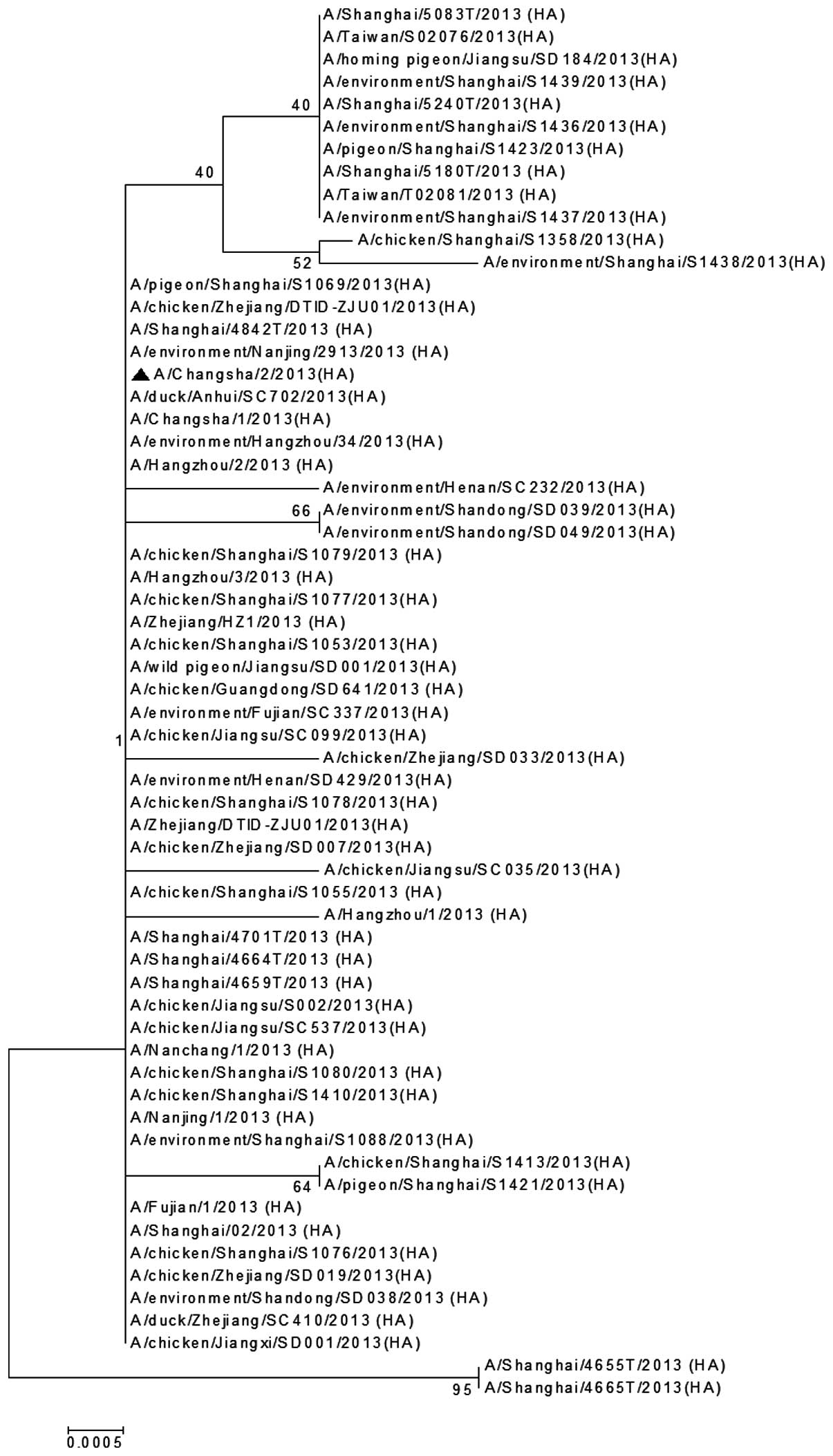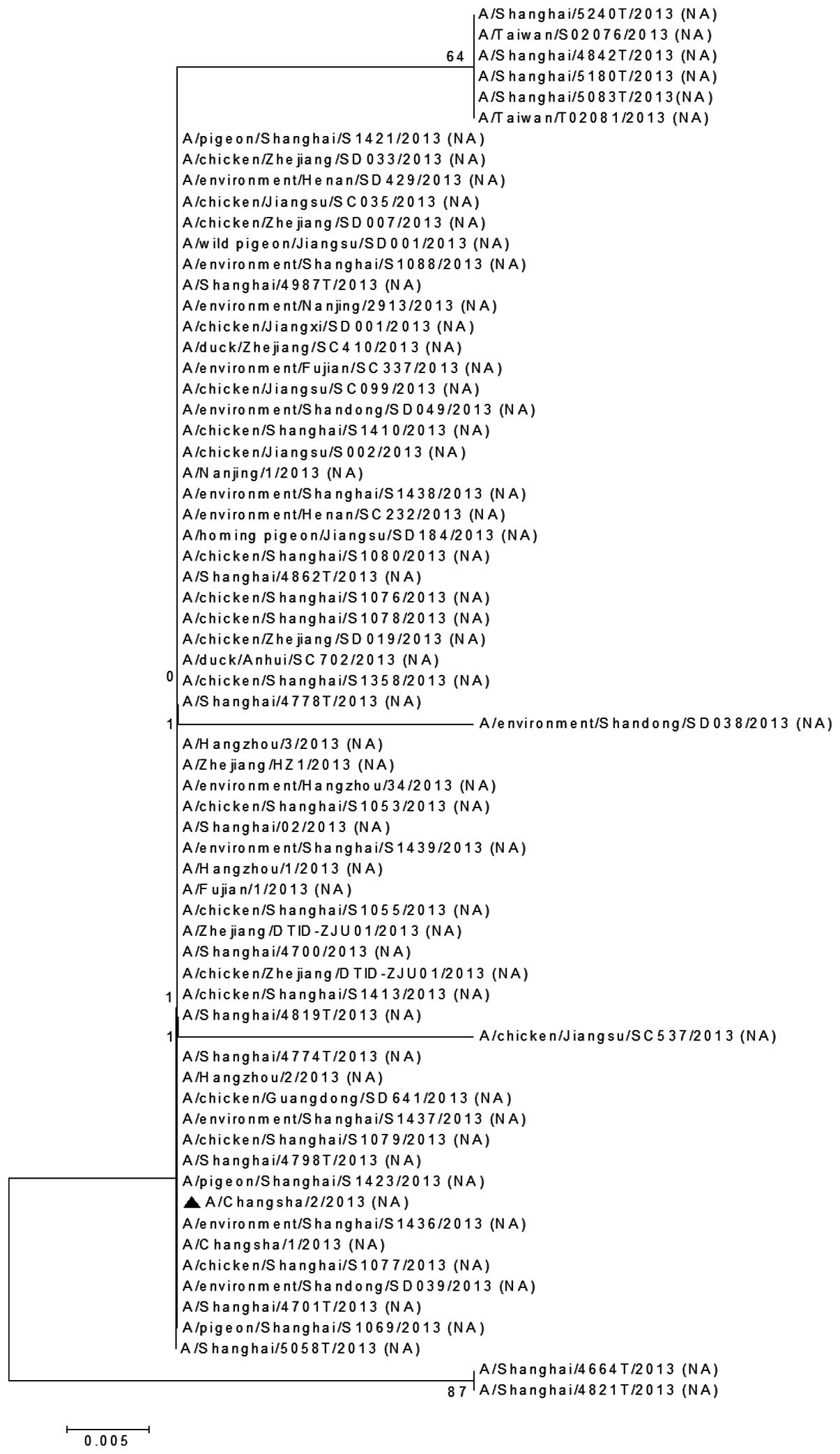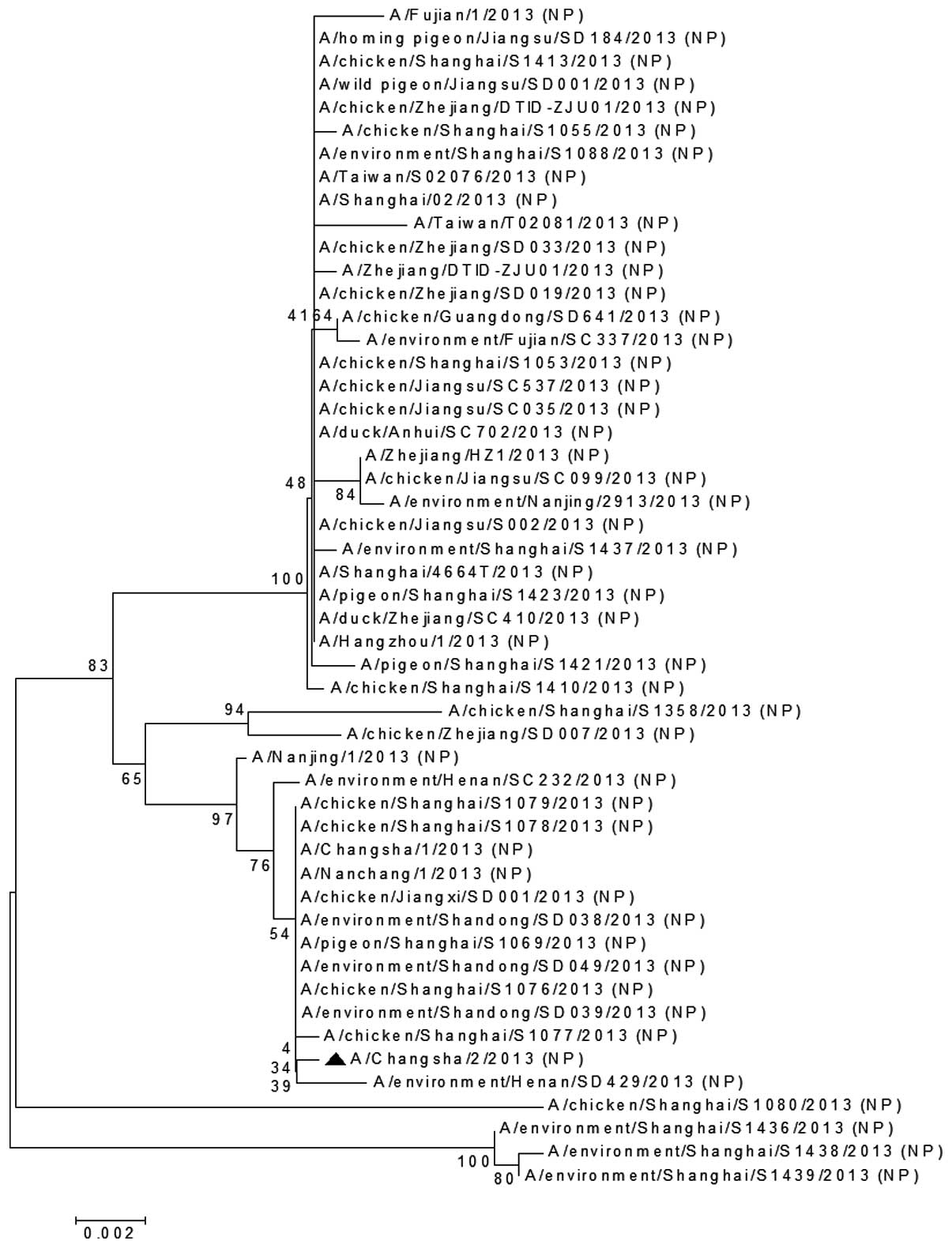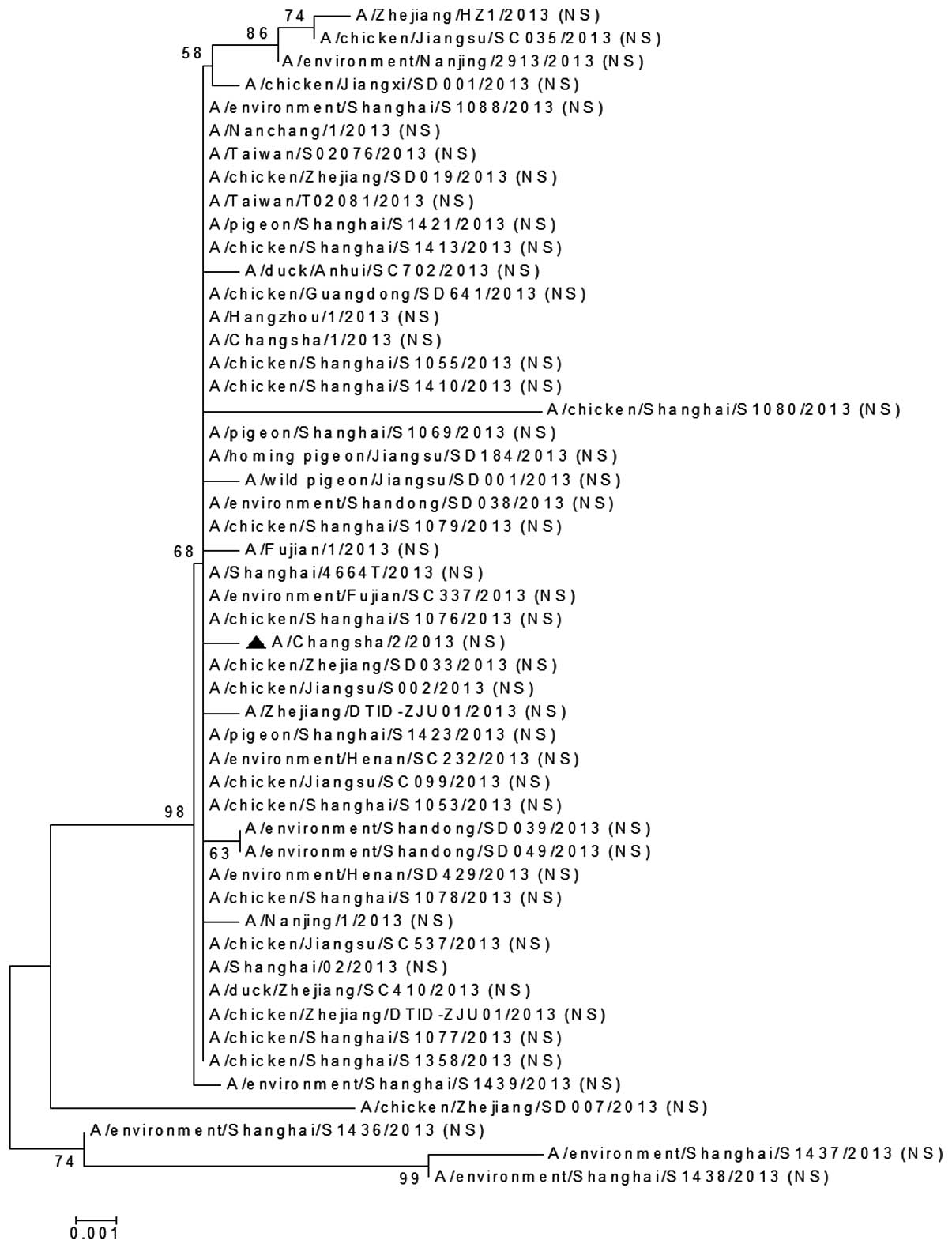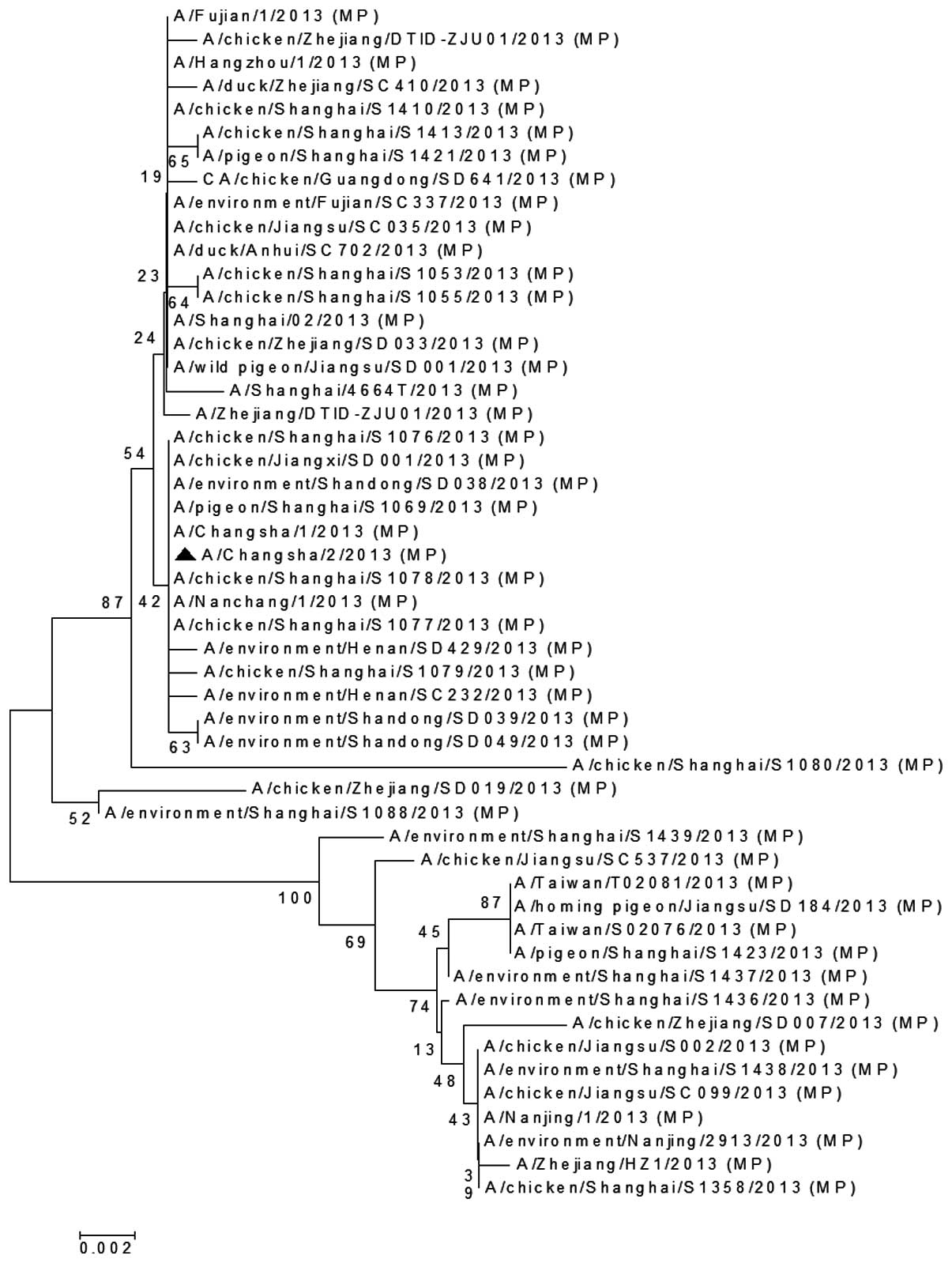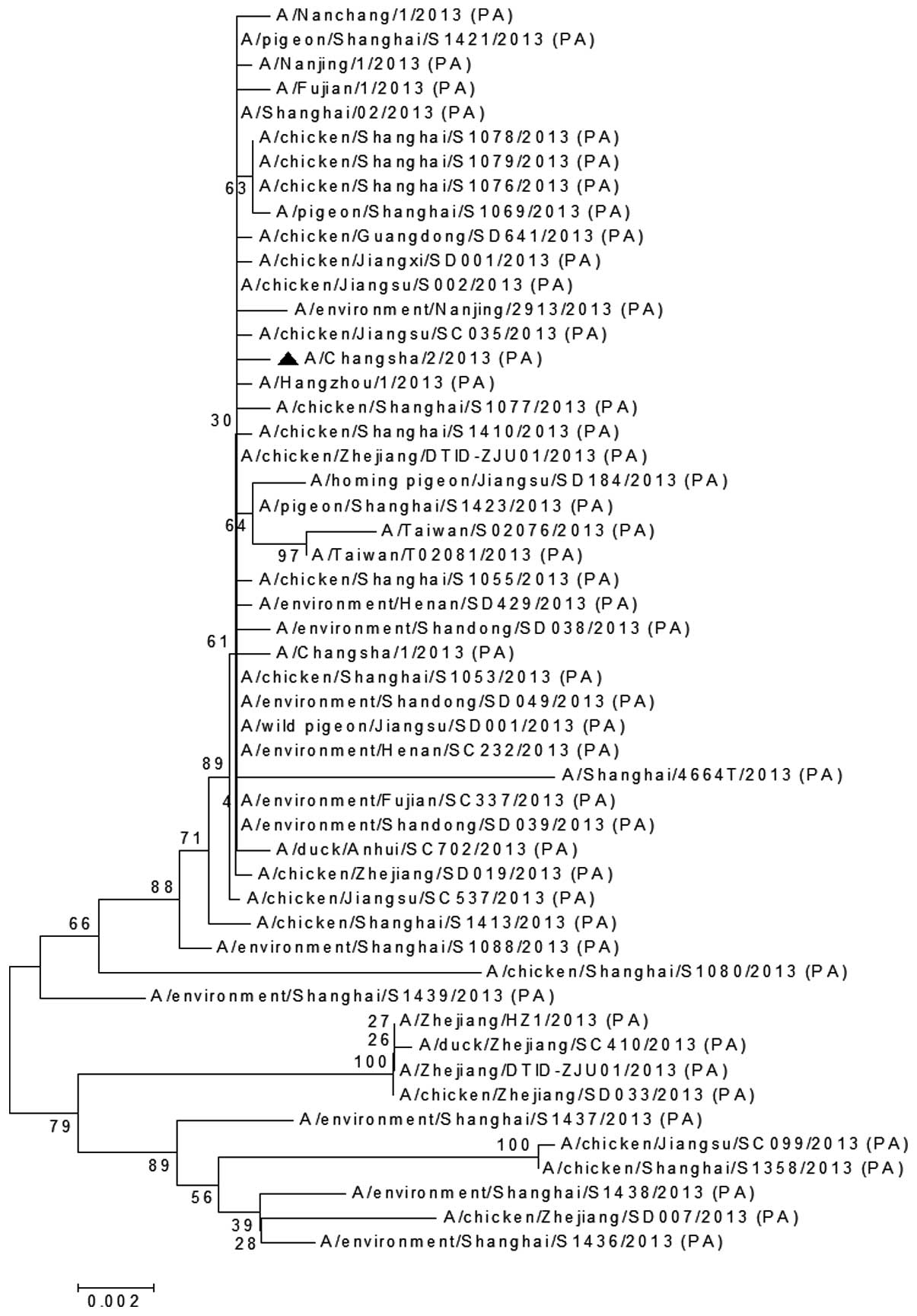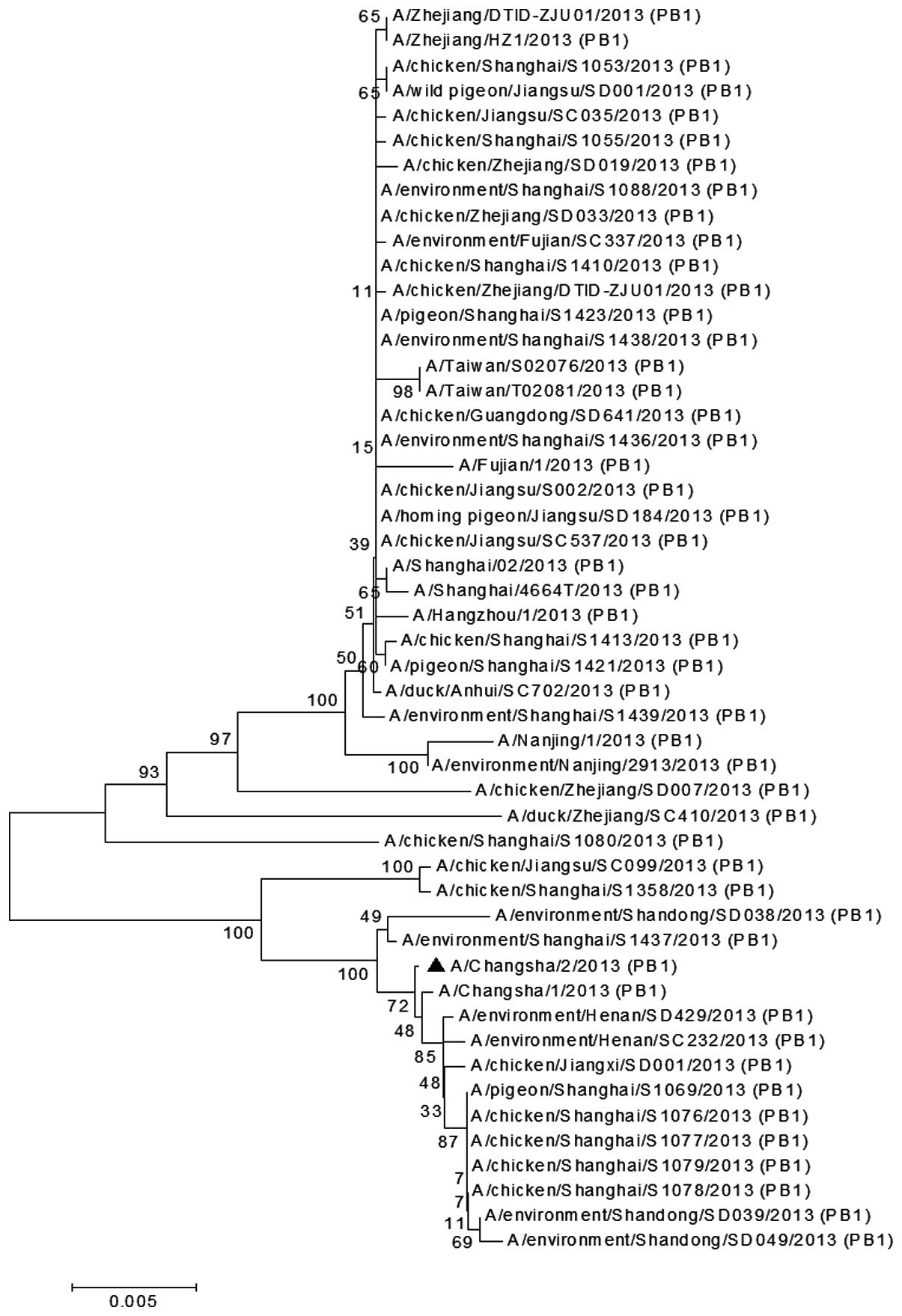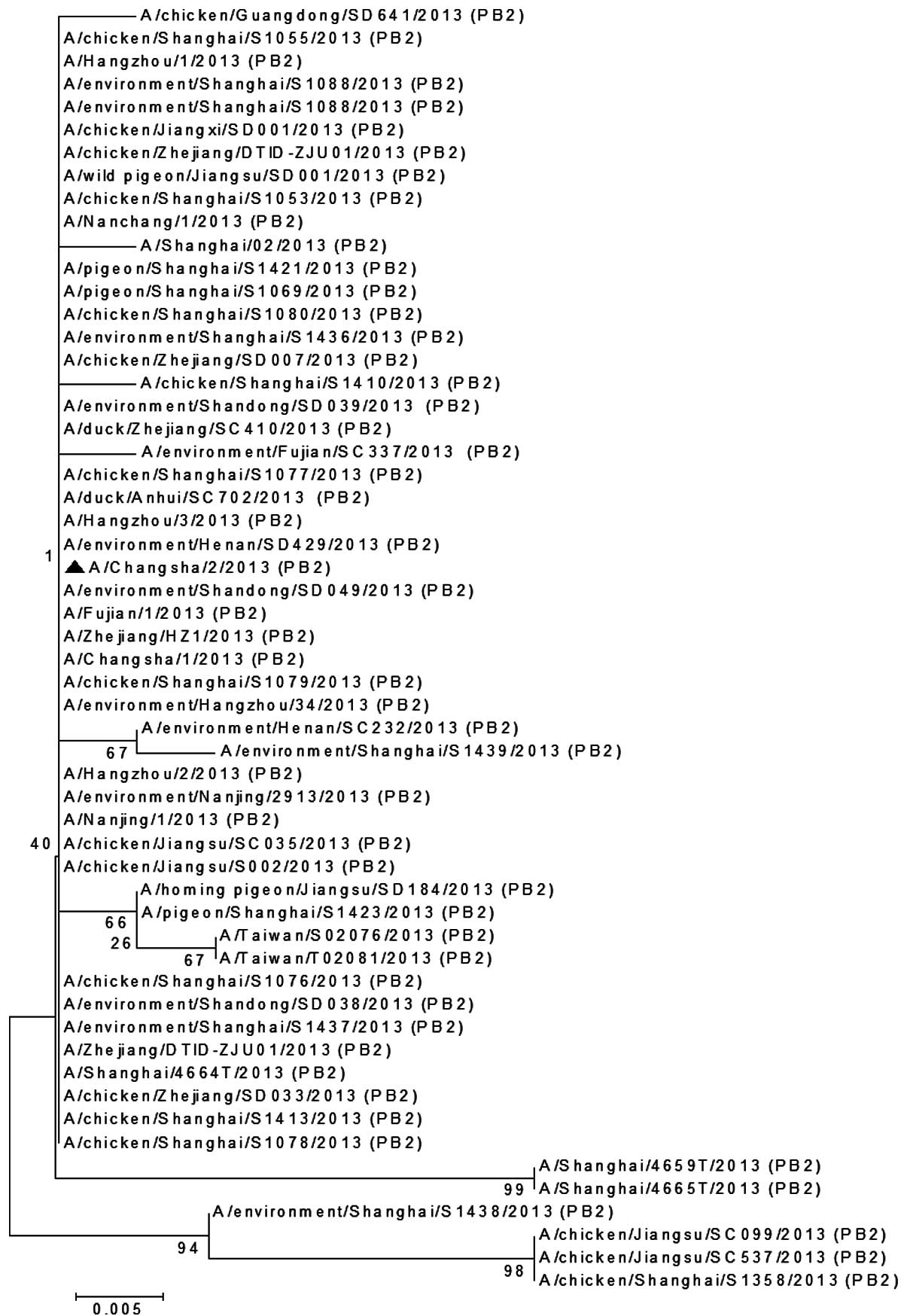Analysis of the full‑length genome of a novel strain of the H7N9 avian influenza virus
- Authors:
- Published online on: February 28, 2014 https://doi.org/10.3892/etm.2014.1590
- Pages: 1369-1375
Metrics: Total
Views: 0 (Spandidos Publications: | PMC Statistics: )
Total PDF Downloads: 0 (Spandidos Publications: | PMC Statistics: )
Abstract
The aim of the present study was to analyze the evolution and variation of a novel strain of the avian influenza virus. The virus‑positive specimens [A/Changsha/2/2013 (H7N9)] from a patient infected with the novel avian influenza A (H7N9) virus was amplified by reverse transcription‑PCR and the full genome was sequenced. The sequencing results were submitted to GenBank and then analyzed by phylogenetic tree analysis using BioEdit and Mega5 software. The phylogenetic tree of the hemagglutinin (HA) and neuraminidase genes revealed that A/Changsha/2/2013 (H7N9) and all the new H7N9 viruses in 2013 were in a large cluster, and their nucleotide evolutionary distances were closely associated. Phylogenetic tree analyses of the nucleoprotein and nonstructural genes demonstrated two main branches. One branch contained novel H7N9 viruses isolated from avian, human and environmental sources in different regions. The other branch contained three novel H7N9 virus strains isolated from environmental sources in Shanghai. All the phylogenetic trees of the matrix protein, polymerase acidic, polymerase basic protein 1 and polymerase basic protein 2 genes also showed two branches, with each branch including the novel H7N9 virus strains isolated from avian, human and environmental sources in different regions. Molecular characterization demonstrated that 52 novel H7N9 viruses sequenced to date contain the G228S and G186V mutations in the receptor binding site of the HA protein. The full‑genome sequences of A/Changsha/2/2013 and analyses of its molecular characteristics suggest that the A/Changsha/2/2013 H7N9 virus strain has molecular characteristics that may facilitate adaptation of the virus to mammalian hosts and may even bind to human receptors.



